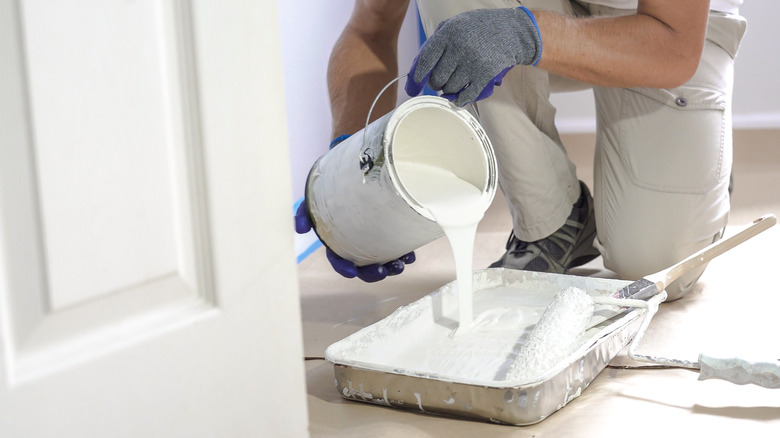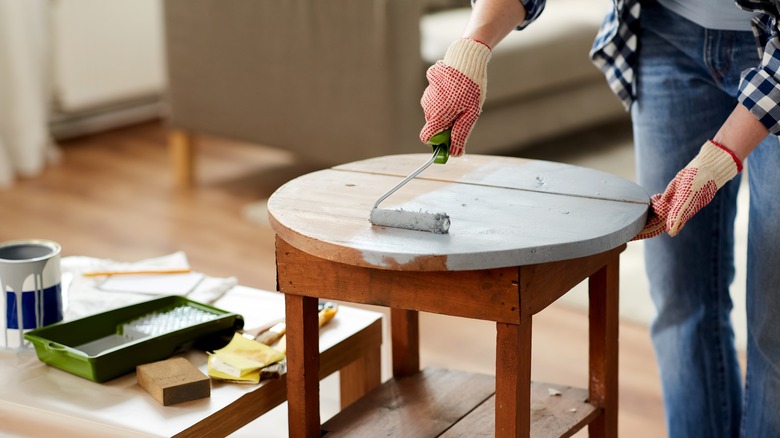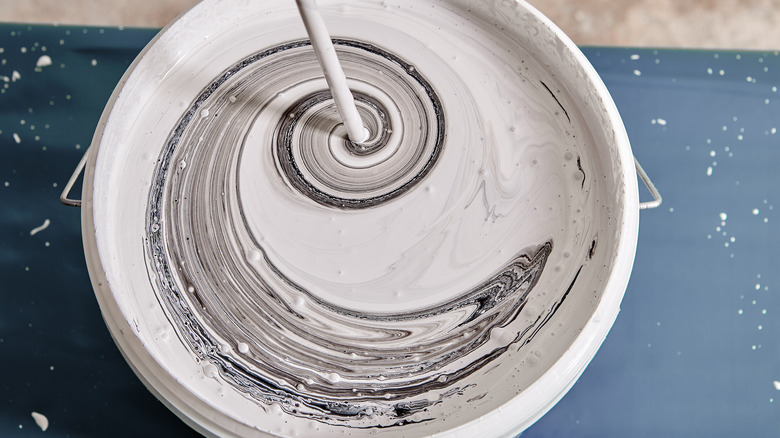What You Need To Know About Milk Paint
You may have heard of typical latex paints and their other, more environmentally friendly alternatives, but have you ever considered a paint that contains milk? Milk paint, named after its ingredients, contains casein, the protein found in milk, along with lime and natural pigments (via Maison e Maison). This formula has been around for thousands of years, but after the development of modern paints, it fell out of popularity. Now, however, as people search for biodegradable and natural alternatives, it has seen a renaissance.
The final look of this formula is matte, slightly textured, and resembles something similar to chalk paint. It's also quite durable if properly applied, but it can be distressed to create a variety of looks if you'd rather have something a bit more worn in. It's much safer than typical paints, is low or no VOC, and contains natural, renewable, and biodegradable ingredients, so it's a great option if you're looking for ways to reduce your carbon footprint.
What is milk paint used for?
Because of its low sheen and brushed finish, milk paint is a popular choice for details around the home. It adheres well to unfinished wood and gives off a slightly worn-in look, but, according to My Painted Door, you can also use it just about anywhere else you see fit — interior and exterior walls, furniture, and cabinets are all fair game. This paint is popular with fans of the farmhouse or shabby chic look because, if no primer is applied, it's easy to distress and will provide a naturally worn look over time.
Unlike regular paint, the opacity of milk paint can be customized to achieve whatever final look you want on your finished product. Add more water and you create a stain similar to whitewash; keep it thicker and you have a full coverage paint that will conceal whatever material is underneath. You can even seal certain types of milk paint to up the sheen a bit and increase its durability, mimicking the look of typical paints without the harmful ingredients.
How to apply milk paint
The application of milk paint varies based on your desired final look and the brand you choose, but for the most part, it's similar to regular paint. According to My Painted Door, genuine milk paint comes in powdered form, so add water and thoroughly mix to reach your desired thickness, making sure to get out any lumps. Then, start off your project with a bonding agent. If you want a distressed, chippy look, you can skip this step, but for regular application, a primer ensures proper adhesion and protects against damage, especially on surfaces that are sealed or have already been painted.
From there, go to town painting. This formula naturally showcases a bit of texture, so go in with a brush or foam roller depending on your preference. After, if you want a shinier look, you can apply a water-based sealant to finish off your project — just look out for potential yellowing if you're working with a lighter color.


